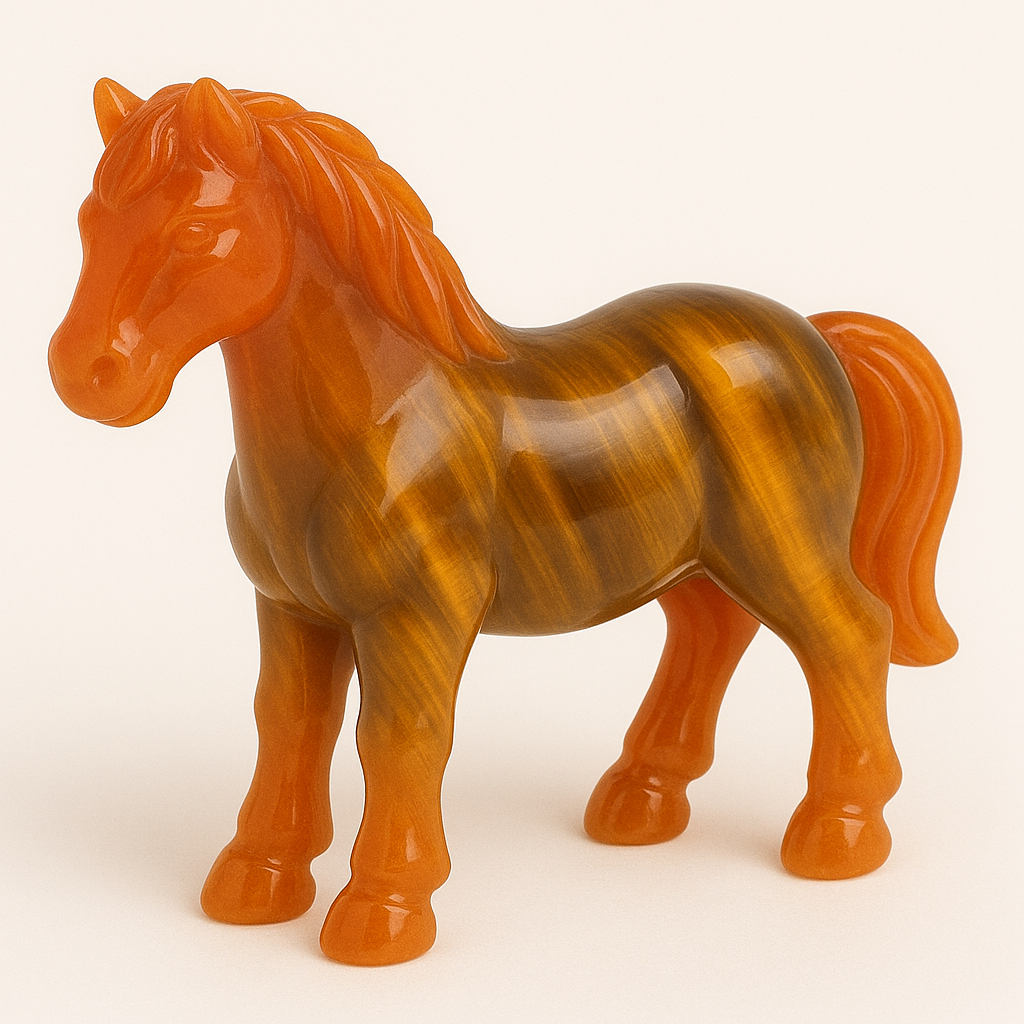
The Symbolism of Horses
Share
With muscles coiled beneath a polished coat, and breath drawn from deep within the Earth, the horse moves as a channel of power, freedom, and nobility. It does not crawl nor creep—it runs, carrying with it a field of energy that is both wild and harmonious. The horse is a symbol of pure will given form, of movement guided by trust, and of strength that is beautiful not because it dominates, but because it yields to guidance without losing its essence.
To contemplate the horse is to witness a being that embodies both service and sovereignty, a mirror for the seeker who must learn how to direct power without abuse and surrender without loss of self.
The Spirit of the Steed in Collective Memory
Across civilizations, the horse has galloped through the stories of gods, heroes, and travelers. It is never just transport—it is a companion to destiny, a creature whose speed and strength amplify the will of the one who rides.
In ancient Greece, horses were sacred to Poseidon, the god of oceans and earthquakes, representing the untamed force of nature harnessed, but never fully controlled. In Norse myth, Odin’s eight-legged steed Sleipnir crossed realms, becoming a bridge between dimensions, both physical and spiritual.
Among the peoples of the Steppe and the Plains, horses were revered not as tools, but as extensions of the self—partners in war, survival, and ceremony. They carried warriors into battle, but also guided shamans in vision quests. In Native American tradition, the horse is often seen as a gift of spirit, bringing empowerment, expansion, and connection to the Great Mystery.
In all symbolic frameworks, the horse is not reduced to labor. It becomes a vessel for movement, will, and relationship—not only between places, but between levels of being.
Freedom, Will, and the Language of Motion
The horse moves not mechanically, but expressively. Every motion is a gesture of spirit—whether galloping across open land or standing in stillness with head held high. It communicates through posture, breath, and subtle cues. It is not a being that needs words, for it feels intention.
It will not obey force, but it yields to trust. The horse teaches that real leadership is not domination, but attunement. When in harmony with a rider or herd, it becomes one with the motion. When mistreated or misaligned, it resists—not out of rebellion, but out of preservation of its inner dignity.
Its power is never wasted. Its instincts are clean. It responds to threat with speed, to stillness with presence, and to clear guidance with unhesitating cooperation. In this, the horse becomes a living expression of integrated will—the kind that does not need to force its path, but simply becomes the path through movement.
Resonance with the Energy Centers
The horse resonates primarily with the yellow-ray energy center—the solar plexus chakra, which governs will, identity, direction, and coordination within the social and energetic field.
This yellow-ray expression is balanced and dynamic. The horse is neither solitary nor lost in the group—it holds its place, knows its motion, and acts with clear energy. It represents healthy self-direction, aligned confidence, and the ability to channel force without distortion.
There is also a secondary resonance with the orange-ray energy center—the sacral chakra, which reflects fluid motion, sensual experience, and emotional relationship with others. The horse’s grace in movement, its emotional sensitivity, and its capacity for deep relational bonds mirror this orange-ray expression. It teaches that strength is not stiff—that true power must remain flexible, responsive, and connected.
Together, yellow and orange form the energy of a being that knows both how to move and how to feel—how to act and how to relate. The horse is not a machine of will, but a companion of the heart.
The Guide of Embodied Power
To walk with the horse is to walk with the force that moves mountains—but chooses to run beside others instead of through them. It teaches that freedom and responsibility are not opposites, but two expressions of the same current.
It shows that to trust another with one's power is not weakness, but wisdom. That movement is not just from one place to another—but from one self to another.
The horse reminds the seeker that the journey is not a burden.
It is a rhythm to be entered, a dance to be remembered.
It does not wait.
It runs—not to escape, but to become the wind.